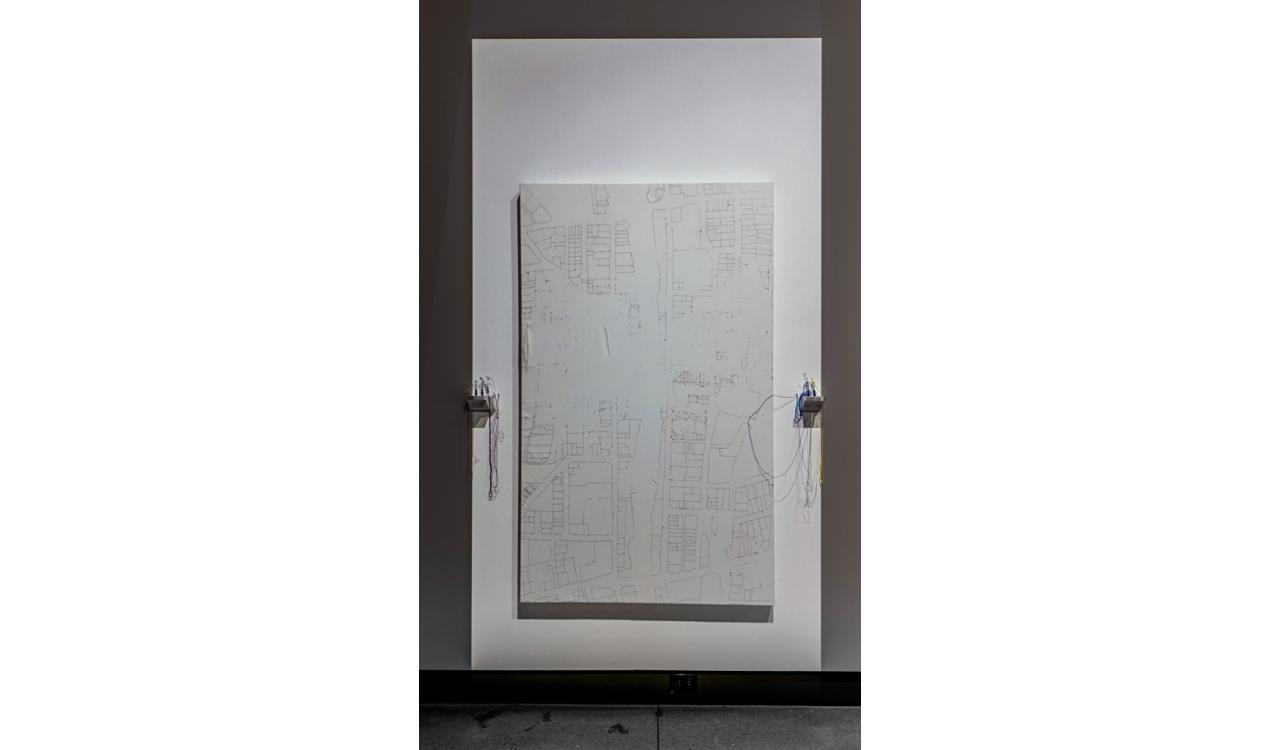Dani Kastelein-Longlade and Amina Lalor with guest artists: Katherine Rae Diemert and Brenda Mabel Reid
Journey With Our Kin brings together artworks that explore relationships to land within and surrounding the O:se Kenhionhata:tie* watershed, on the Haldimand Tract, and within the territories of the Neutral, Anishinaabeg, and Haudenosaunee peoples.
*O:se Kenhionhata:tie, translated to Willow River, is the Mohawk name for the Grand River.
Developed and programmed by artist-curators, Dani Kastelein-Longlade and Amina Lalor, with works by guest artists Katherine Rae Diemert and Brenda Mabel Reid the exhibition asks:
What does it mean to care for the land that cares for us? How do we foster kinship among all our relations — the interconnected network of creation that encompasses the earth, water, air, sun, moon, plants, fungi, and animals?
How do we reconcile and bring together multiple perspectives to build community in connection with the land?
How do we strengthen our capacity to care for the land? What skills do we need to do so?
How do we creatively express our journeys of (re)connection with our other-than-human kin?
The exhibiting artists will host a series of community events to explore these questions in dialogue with the artworks and create space for sharing perspectives, stories, and knowledge on how to honour and nurture our land-based relationships.
Dani Kastelein-Longlade (they/them) is an architectural designer within the Indigenous Design Studio at Brook McIlroy, an architecture, urban design, landscape architecture, and planning firm with offices in Toronto, Thunder Bay, and Winnipeg. Dani is also an artist and illustrator who is active in the academic community as a published researcher and lecturer. A registered citizen with the Métis Nation of Ontario, they hold kinship ties that extend from the Red River to the surrounding regions of Georgian Bay as a Drummond Island descendent (Aabitaawizininiwag). Dani earned their Master of Architecture degree in the Collaborative Water Program at the University of Waterloo and is currently residing in Block 2 of the Haldimand Tract, land that was promised to the Haudenosaunee, also known as the Six Nations of the Grand River.
Amina Lalor (she/her) is a Vietnamese-Irish-Métis designer and researcher currently working as an intern architect at Smoke Architecture. Her Métis roots are from Red River and she is a member of the Métis Nation of Ontario. Since 2018, she has been working as a researcher at the University of Guelph to help create "Nokom’s House," a proposed Indigenous land-based research lab led by Indigenous scholars Dr. Kim Anderson, Dr. Sheri Longboat, and Dr. Brittany Luby. Amina holds a Bachelor of Architectural Studies and Master of Architecture from the University of Waterloo where she has also recently taught as an adjunct instructor. Working from the perspective of a mixed settler, refugee, and Indigenous designer, Amina’s continued research explores the meaning of practicing architecture "in a good way" on Indigenous lands within a violently imposed settler-colonial context.
Katherine Rae Diemert is a visual artist based out of Hamilton, Canada. She makes visual and interactive mixed media work inspired by natural forms and artificial processes. Katherine often begins with drawing or collage, developing work through a process of translation and iteration between mediums. She layers software, motion, assemblage, and installation to transform images and materials. Katherine studied and now teaches Illustration at Sheridan College (BA, Honours, 2015), attended The School for Poetic Computation (New York, 2019), and exhibited across North America.
Brenda Mabel Reid (they/she) is an emerging artist and designer based in Kitchener. They earned a bachelor's (2019) and a master's degree (2021) from the School of Architecture at the University of Waterloo. They currently work out of their studio at the KW Artist’s Co-op and have been engaged in teaching and research work at the University of Waterloo. Brenda’s practice explores ideas around care, community and the peculiarity of urban space. Their work is often collaborative and engages with the public, including the recent community pandemic quilt “From Behind The Mask,” with nearly 600 participants.
Journey With Our Kin is presented in partnership with the University of Waterloo School of Architecture.
























